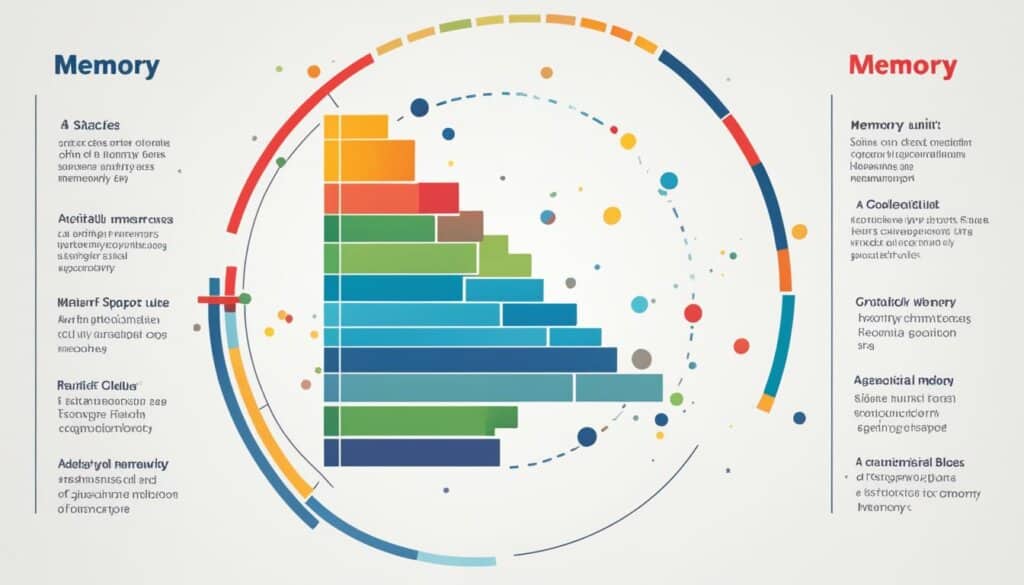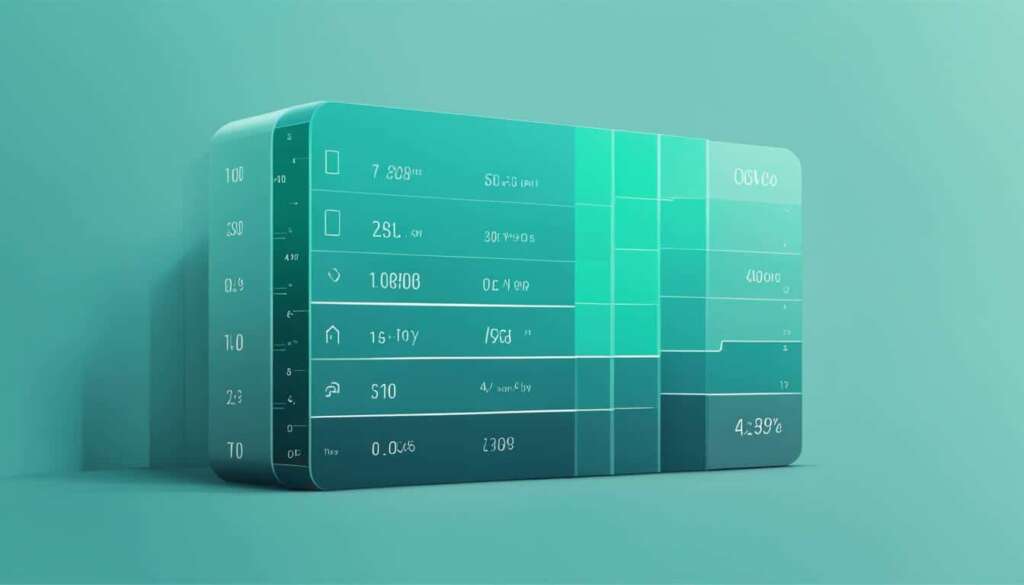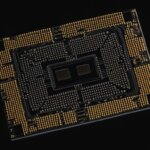Table of Contents
Welcome to our comprehensive guide on understanding KB (kilobyte) as a unit of computer data measurement. In this guide, we will break down the concept of computer memory, explore different types of memory, and delve into the units used to measure memory and data storage.
Computer memory plays a crucial role in storing information temporarily or permanently. It can be volatile or non-volatile. Volatile memory, like RAM, loses its contents when the computer is switched off, while non-volatile memory, such as EPROM, retains its contents even without power. Computer memory is divided into primary memory (main memory) and secondary memory, with primary memory being faster but smaller in capacity compared to secondary memory.
When it comes to measuring memory, we use units like bits, bytes, kilobytes (KB), megabytes (MB), gigabytes (GB), terabytes (TB), and more. However, the confusion arises when we consider the base-2 and base-10 systems. Computers, which use the base-2 system, define 1 KB as 1,024 bytes, while the base-10 system considers 1 KB as 1,000 bytes. This mismatch has led to confusion in data measurement.
In the upcoming sections, we will explore the types of computer memory, delve into the units of memory measurement, and address the conflict between KB and KiB. Stay tuned for a thorough understanding of KB and its significance in data measurement.
What is Memory?
Computer memory is an essential component of a computer system responsible for storing, processing, and retrieving data, information, and instructions. It plays a crucial role in the functioning of a computer, facilitating various operations and enabling the execution of programs.
Memory can be broadly classified into two main categories: primary memory (also known as main memory) and secondary memory. Primary memory is the computer’s working memory, where data and instructions are temporarily stored during processing. It is faster than secondary memory but has a smaller capacity.
On the other hand, secondary memory is used for long-term storage of a larger amount of data or information. It retains data even when the computer is powered off and is typically slower than primary memory.
Imagining a computer system without primary memory would be like envisioning a chef without a countertop – it is an integral part that cannot be omitted. Primary memory’s speed allows for faster access to frequently used instructions and data, enhancing the overall performance and responsiveness of the system.
Here is a visual representation of the memory hierarchy:
| Memory Type | Speed | Capacity | Volatility |
|---|---|---|---|
| Primary Memory | High | Small | Volatile |
| Secondary Memory | Lower | Large | Non-volatile |
As shown in the table above, primary memory has high speed but limited capacity, while secondary memory has slower speed but a larger storage capacity. It is the combination of these two types of memory that enables the efficient functioning of a computer system.
“Memory is the power of a computer system and forms the foundation for its operations.”
Understanding the concept of memory is crucial for grasping the inner workings of a computer system. In the next section, we will explore the different types of computer memory, delving deeper into the primary and secondary memory divide.
Next: Types of Computer Memory
Types of Computer Memory
Computer memory can be divided into different types, each serving a unique purpose in the overall functioning of the system. Understanding these different types of computer memory is essential to comprehend how data is stored and accessed.
Volatile Memory
Volatile memory refers to a type of memory that loses its contents when the computer or hardware device is switched off. This means that the data stored in volatile memory is not retained once the power supply is cut off. RAM (Random Access Memory) is a well-known example of volatile memory. It provides fast and temporary storage for data that the computer is actively using. However, any information stored in RAM is ultimately lost when the computer is shut down or restarted.
Non-volatile Memory
On the other hand, non-volatile memory retains its contents even without power. This type of memory is designed to store data for an extended period, making it suitable for long-term storage needs. One common example of non-volatile memory is EPROM (Erasable Programmable Read-Only Memory). EPROM can be programmed and erased multiple times, making it versatile for storing firmware and other types of permanent data.
Cache Memory
Cache memory is a faster form of memory that aids in improving the overall performance of the computer’s central processing unit (CPU). It operates as a temporary storage between the CPU and the main memory, storing frequently accessed data to reduce the CPU’s processing time. Cache memory helps speed up data retrieval, as the CPU can access the cached data more quickly compared to retrieving the data from the main memory. It plays a crucial role in optimizing the computer’s performance and efficiency.
| Memory Type | Description | Example |
|---|---|---|
| Volatile Memory | Memory that loses its contents when the power is turned off | RAM (Random Access Memory) |
| Non-volatile Memory | Memory that retains its contents even without power | EPROM (Erasable Programmable Read-Only Memory) |
| Cache Memory | Faster memory that stores frequently accessed data to speed up CPU processing | CPU Cache |
Understanding the different types of computer memory, including volatile memory, non-volatile memory, and cache memory, provides valuable insights into how data is stored and accessed within a computer system. This knowledge is essential for troubleshooting memory-related issues and optimizing system performance.
Units of Memory
In computer memory, data is stored in the form of bits, which are represented by 0s and 1s. Bits are combined to form bytes, with 8 bits making up a byte. A kilobyte represents 1,024 bytes, not 1,000 bytes, as commonly misunderstood. Similarly, a megabyte represents 1,024 kilobytes, and a gigabyte represents 1,024 megabytes. These units of memory are used to measure computer storage and are commonly used in discussing computer specifications and file sizes.
| Unit of Memory | Approximate Value |
|---|---|
| Bit | Binary digit, represents 0 or 1 |
| Byte | 8 bits |
| Kilobyte (KB) | 1,024 bytes |
| Megabyte (MB) | 1,024 kilobytes |
| Gigabyte (GB) | 1,024 megabytes |
Understanding the units of memory is crucial for effectively managing computer storage. It allows users to accurately determine the size of files, estimate storage requirements, and make informed decisions when purchasing storage devices. Additionally, it helps avoid confusion caused by the difference between the base-10 and base-2 counting systems.

The units of memory, including kilobyte, megabyte, and gigabyte, provide a standardized way to measure and discuss computer storage. Remembering that kilobytes and other larger units are defined as powers of 2 can help avoid confusion when estimating file sizes or storage capacities.
The Conflict and Solution: KB vs KiB
Confusion between KB and KiB stems from the disparity between the base-10 and base-2 systems. While mathematics adheres to the base-10 system, computing utilizes the base-2 system to streamline data transfer. In the base-2 system, 1 KB corresponds to 1,024 bytes, whereas the base-10 system defines 1 KB as 1,000 bytes. This discrepancy has resulted in the introduction of terms such as kibibyte (KiB) and mebibyte (MiB), representing 1,024 bytes and 1,048,576 bytes respectively. Despite this, the general public remains more familiar with the term kilobyte (KB), which denotes 1,000 bytes.
This conflict between KB and KiB highlights the challenges of unifying binary and base-10 systems within common usage. The dichotomy between these systems can cause confusion when discussing data storage, transfer rates, and file sizes. By understanding the differences between KB and KiB, users can navigate this conundrum and make informed decisions regarding data measurement and storage requirements.
Kilobyte (KB)
A kilobyte (KB) is a commonly used unit of measurement for computer memory and data storage. It is equal to 1,024 bytes, not 1,000 bytes as often misunderstood. Kilobytes are primarily used for measuring small amounts of data and file sizes.
For example, a simple text document may have a file size of 10 KB, while graphics on a small website can range between 5 KB and 100 KB in size. Kilobytes are also frequently discussed when referring to the size of files and small amounts of data.
“A kilobyte is a unit of information or computer storage equal to 1,024 bytes. It is commonly used for measuring file sizes and data quantities in the computing industry.” – Techopedia
The importance of understanding kilobytes lies in accurately gauging the size and potential impact of files and data. Being aware of kilobyte measurements helps in better managing storage space, network bandwidth, and file transfer times.
To give you a better idea of kilobyte usage, here are a few examples:
- A simple email without attachments is typically less than 10 KB in size.
- A short plain text document, such as a Word document, can range from a few KB to a few hundred KB depending on its length.
- Basic webpages with minimal graphics and text content usually have file sizes between 20 KB and 100 KB.
Understanding the kilobyte measurement is crucial when managing storage capacities, estimating bandwidth requirements, or determining data transfer speeds. It allows for efficient allocation of resources and ensures optimal system performance.
Kilobyte Conversion Chart
| Kilobyte (KB) | Bytes |
|---|---|
| 1 Kilobyte (KB) | 1,024 bytes |
| 10 Kilobytes (KB) | 10,240 bytes |
| 100 Kilobytes (KB) | 102,400 bytes |
| 1,000 Kilobytes (KB) | 1,024,000 bytes |
As represented in the conversion chart above, a kilobyte is an essential unit of measurement for understanding file sizes and effectively managing computer data. By being aware of the 1,024-byte equivalence, users can better comprehend and assess the space required for storing files and the capacity needed for data management.
Megabyte (MB)
A megabyte is a unit of measurement for computer memory and data storage. It is equal to 1,048,576 bytes or 1,024 kilobytes. Megabytes are commonly used to measure larger amounts of data and file sizes, making them essential in understanding digital storage capacities.
When discussing file sizes, a high-resolution JPEG image may range in size from 1 to 5 megabytes. Similarly, a 3-minute song saved in a compressed version can be roughly 3 megabytes in size. These examples highlight how megabytes are relevant to various media types, including images, audio files, and videos.
In addition to file sizes, megabytes are also crucial in understanding storage capacities of media drives and data transfer rates. Whether it’s the capacity of a hard drive or the bandwidth of an internet connection, megabytes provide a standard unit to quantify data storage and transfer capabilities.
FAQ
What is KB?
KB stands for kilobyte, a unit of measurement for computer memory and data storage. It is equal to 1,024 bytes, not 1,000 bytes. Kilobytes are commonly used to measure small amounts of data and file sizes.
What is memory?
Memory refers to the hardware part of a computer system that stores data, information, and instructions. It is where data is stored, processed, and the instructions required for data processing are stored. Memory is divided into primary memory (main memory) and secondary memory, with primary memory being faster but smaller in capacity compared to secondary memory.
What are the types of computer memory?
There are different types of computer memory. Volatile memory refers to memory that loses its contents when the computer or hardware device is switched off, such as RAM. Non-volatile memory, on the other hand, retains its contents even without power, such as EPROM. Cache memory is a faster memory that stores frequently accessed data to speed up the CPU’s processing speed.
What are the units of memory?
In computer memory, data is stored in the form of bits, which are represented by 0s and 1s. Bits are combined to form bytes, with 8 bits making up a byte. The units of memory used to measure computer storage include bits, bytes, kilobytes (KB), megabytes (MB), gigabytes (GB), terabytes (TB), and so on.
What is the conflict between KB and KiB?
The conflict arises from the difference between the base-10 and base-2 systems. While the base-10 system is commonly used in mathematics, the base-2 system is used in computing. This created confusion and led to the introduction of the terms kibibyte (KiB) and mebibyte (MiB) to represent 1,024 bytes and 1,048,576 bytes, respectively.
What is a kilobyte (KB)?
A kilobyte is a unit of measurement for computer memory and data storage. It is equal to 1,024 bytes, not 1,000 bytes. Kilobytes are commonly used to measure small amounts of data and file sizes.
What is a megabyte (MB)?
A megabyte is a unit of measurement for computer memory and data storage. It is equal to 1,048,576 bytes or 1,024 kilobytes. Megabytes are used to measure larger amounts of data and file sizes.












